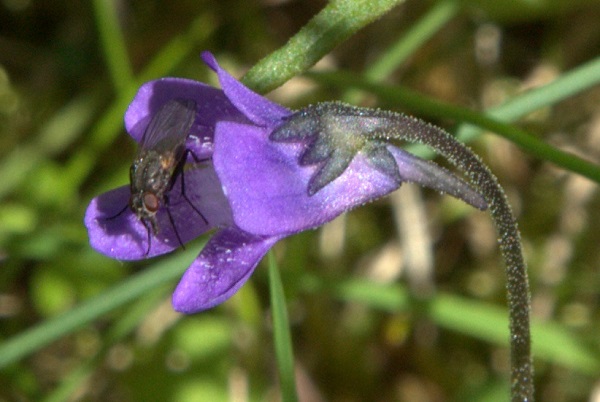
| Scientific name: | Pinguicula vulgaris L. | |
| Swedish name: | Tätört | |
| German name: | Gewöhnliches Fettkraut | |
| Nederlandse naam: | Gewoon vetblad | |
| English name: | Common Butterwort | |
| Order: | Lamiales | |
| Family: | Lentibulariaceae, Tätörtsväxter |

|
| Life form: | Perennial, 'carnivorous' herb. | |
| Stems: | Height 10–20 cm (4–8 in.), leafless, with glandular hairs. | |
| Leaves: | Sticky leaves, in basal rosette, short-stalked; leaf blade smooth, rigid, succulent, usually bright green. | |
| Flowers: | Violet-blue flowers, a long, narrow and straight spur. | |
| Flowering Period: | June, July. | |
| Fruits: | Capsule, yellowish brown. | |
| Habitat: | Fens, springs, shore banks, damp meadows, gravels, damp rock walls. | |
| Distribution: | Throughout Sweden on damp ground; in southern and central Sweden most often on calcareous soil. |
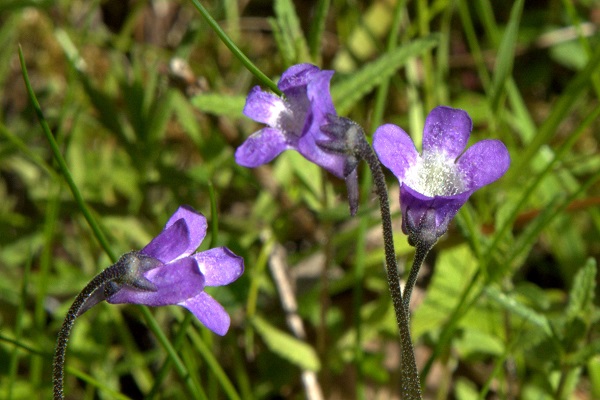 Derivation of the botanical name: Pinguicula, Latin pinguis, bold, referring to the leaf surface that feels oily and shiny. vularis, Latin vulgus, ordinary.
Pinguicula, commonly known as the butterworts, is a genus of carnivorous plants that use sticky, glandular leaves to lure, trap, and digest insects in order to supplement the poor mineral nutrition they obtain from the environments. 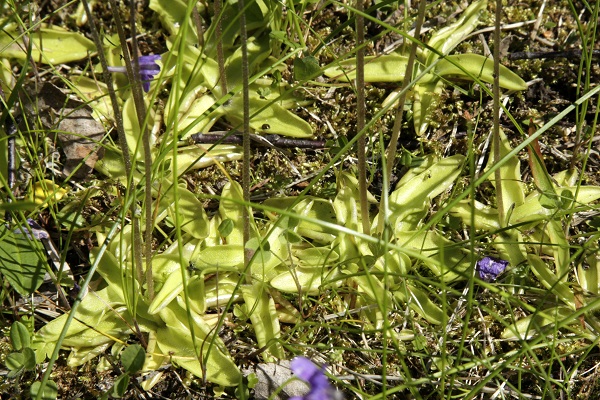 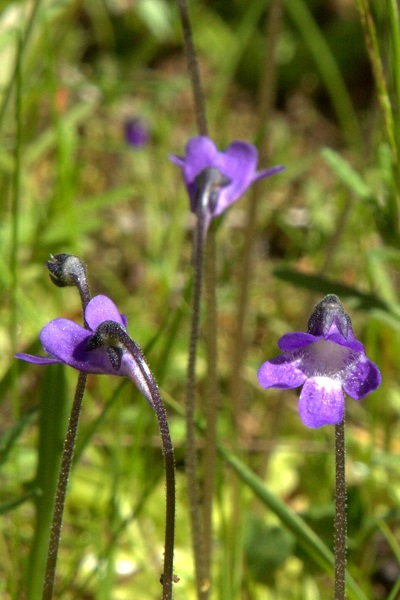 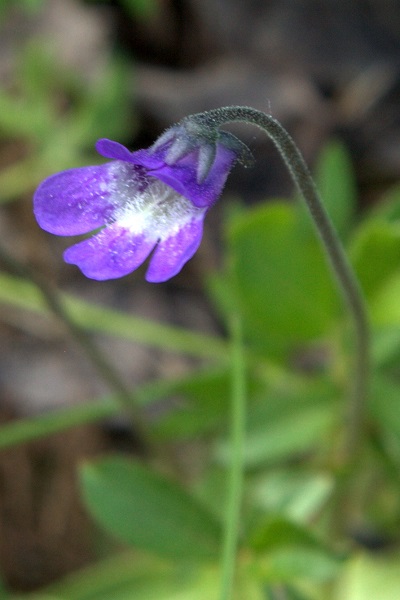 |